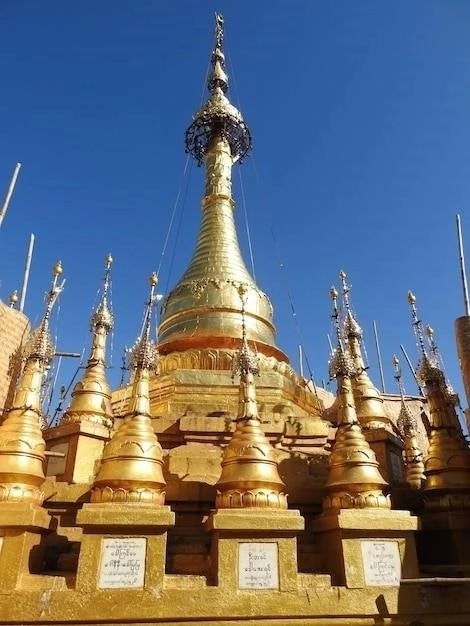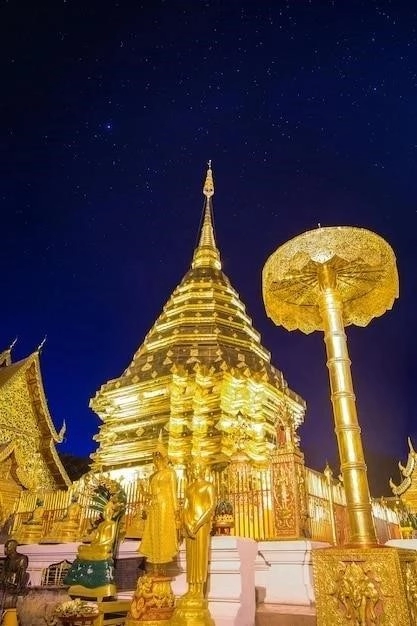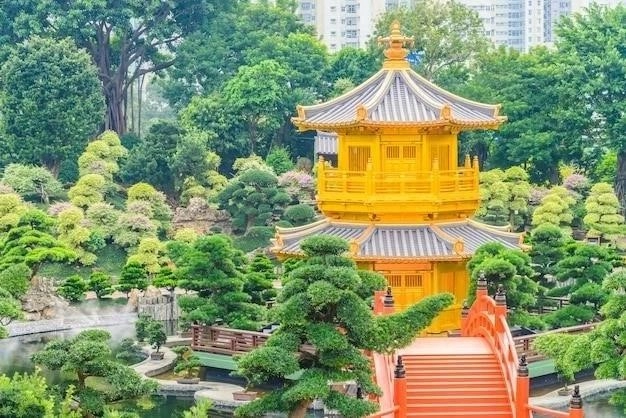Nestled in the heart of Amritsar‚ Punjab‚ the Golden Temple‚ also known as Harmandir Sahib (meaning “abode of God”)‚ stands as a testament to the Sikh faiths principles of equality‚ service‚ and devotion. More than just a religious shrine‚ it is a symbol of peace‚ unity‚ and the boundless generosity of the human spirit.

A Rich History
The history of the Golden Temple is deeply intertwined with the Sikh faith. Guru Amar Das‚ the third Sikh Guru‚ envisioned a central place of worship for Sikhs. His successor‚ Guru Ram Das‚ initiated the construction of the Amrit Sarovar (Pool of Nectar)‚ the sacred pool around which the temple complex is built. It was Guru Arjan Dev‚ the fifth Sikh Guru‚ who conceived and oversaw the construction of the Harmandir Sahib itself. He envisioned a place open to all‚ regardless of caste‚ creed‚ or social standing‚ reflecting the Sikh belief in the equality of all humankind.
Over the centuries‚ the Golden Temple faced numerous attacks and desecrations‚ particularly during the Mughal era. Each time‚ it was rebuilt by the Sikh community‚ their resilience and dedication a testament to their unwavering faith. In the 19th century‚ Maharaja Ranjit Singh‚ leader of the Sikh Empire‚ played a pivotal role in its restoration. He fortified the complex and adorned the Harmandir Sahib with gold foil‚ giving it the iconic appearance we see today.
Architectural Significance: A Fusion of Styles
The Golden Temples architecture is a unique blend of Hindu Rajput and Indo-Islamic styles‚ symbolizing the Sikh faiths emphasis on inclusivity and harmony. Its design reflects a conscious departure from traditional Hindu temple architecture‚ embracing elements from different cultures and traditions.
Key Architectural Features:
- The Amrit Sarovar (Pool of Nectar): This sacred pool surrounds the Harmandir Sahib and is believed to have healing powers. Devotees bathe in its waters as a mark of purification and spiritual cleansing.
- The Harmandir Sahib: The main temple structure‚ covered in gold leaf‚ is a sight to behold. It is two-storied‚ with the upper level gilded and adorned with intricate marble work and precious stones. Its four entrances symbolize the openness of Sikhism to all.
- The Darshini Deori (Gateway): This ornate gateway leads to the causeway connecting the Harmandir Sahib to the perimeter. It features intricate marble work‚ frescoes‚ and gold embellishments.
- Akal Takht (Throne of the Timeless One): Located opposite the Harmandir Sahib‚ this building represents the temporal authority of Sikhism‚ balancing the spiritual aspect of the main temple.
Spiritual Significance: A Place of Reflection and Service
For Sikhs‚ the Golden Temple is the holiest shrine. It represents a place of deep spiritual significance where devotees come to pray‚ reflect‚ and connect with the divine; The presence of the Guru Granth Sahib‚ the Sikh holy book‚ within the Harmandir Sahib further enhances its sanctity. The continuous recitation of hymns from the Guru Granth Sahib‚ known as kirtan‚ creates an atmosphere of profound peace and devotion.
Beyond its religious importance‚ the Golden Temple is a beacon of service and equality. The concept of “seva” (selfless service) is central to Sikhism‚ and this is vividly reflected in the Langar‚ the temples free community kitchen. Open 24/7‚ the Langar serves a simple yet nourishing meal to anyone who enters‚ regardless of background‚ religion‚ or social status. It embodies the Sikh belief in the oneness of humanity and the importance of sharing with those in need.
Visiting the Golden Temple: An Experience of Peace and Humility
A visit to the Golden Temple is a humbling experience. The serene atmosphere‚ the devotion of the pilgrims‚ and the spirit of service that pervades the complex leave a lasting impression. The shimmering golden facade of the Harmandir Sahib‚ reflected in the waters of the Amrit Sarovar‚ creates a scene of ethereal beauty‚ especially at sunrise and sunset.
Guidelines for Visitors:
- Dress modestly‚ covering your head and shoulders. Headscarves are available at the entrance.
- Remove your shoes before entering the temple complex and wash your hands and feet.
- Maintain silence and a respectful demeanor within the temple premises.
- Refrain from photography inside the Harmandir Sahib.
- Partake in the Langar and witness the spirit of service firsthand.

Conclusion: An Enduring Symbol of Hope and Inspiration
The Golden Temple stands as a shining example of religious tolerance‚ human unity‚ and the enduring power of faith. Its architectural splendor‚ rich history‚ and unwavering commitment to service continue to inspire millions around the world. More than just a place of worship‚ it serves as a potent reminder of the values of peace‚ equality‚ and compassion‚ values that resonate far beyond the boundaries of religion and culture.
Beyond the Golden Facade: Delving Deeper into the Heart of Sikhism
While the Golden Temples resplendent exterior captivates the senses‚ it is the deeper symbolism and philosophical underpinnings that truly illuminate its significance. The architectural elements are not merely aesthetic choices but deliberate expressions of Sikh doctrines‚ meticulously crafted to embody the faiths core tenets.

Architectural Symbolism: A Tapestry of Meaning
- Four Entrances: The Harmandir Sahib welcomes devotees from all four cardinal directions‚ signifying the openness and inclusivity of Sikhism. This radical departure from traditional Hindu temples‚ which typically have a single east-facing entrance‚ underscores the egalitarian principles upon which the faith is founded.
- Elevated Base: The temples location on a raised platform‚ accessed by a flight of stairs‚ holds profound meaning. It symbolizes the ascent to spiritual enlightenment and the continuous effort required to rise above worldly concerns and attain a higher state of consciousness.
- Amrit Sarovars Significance: The sacred pool surrounding the Harmandir Sahib is not merely a water body; it represents the boundless ocean of Gods grace. Partaking in a ritual dip‚ known as “Ishnaan‚” is believed to cleanse ones karmic impurities and bestow spiritual rejuvenation.
- Langar: Embodiment of Equality and Service: The concept of “Langar” transcends the notion of a simple community kitchen. It embodies the Sikh belief in dismantling social hierarchies and fostering a sense of unity among all humankind. Rich or poor‚ high caste or low caste‚ everyone shares the same simple meal‚ served with equal dignity and respect.

A Living Legacy: The Golden Temples Enduring Impact
The Golden Temples impact extends far beyond its physical boundaries. It serves as:
- A Beacon of Interfaith Dialogue: The temple complex has hosted numerous interfaith dialogues‚ fostering understanding and cooperation between different religious communities.
- A Center for Social Justice: The Sikh community‚ inspired by the teachings of their Gurus and exemplified by the spirit of “seva‚” actively engages in social justice initiatives‚ providing aid and support to the underprivileged and marginalized.
- A Source of Artistic and Cultural Inspiration: The Golden Temples unique architectural style‚ intricate craftsmanship‚ and rich musical traditions continue to inspire artists‚ musicians‚ and scholars‚ contributing to a vibrant cultural tapestry.
The Golden Temple‚ in its totality‚ is a powerful testament to the Sikh faiths enduring legacy of peace‚ equality‚ and selfless service. It stands as a beacon of hope‚ reminding us of the transformative power of faith and the inherent goodness that resides within humanity.










